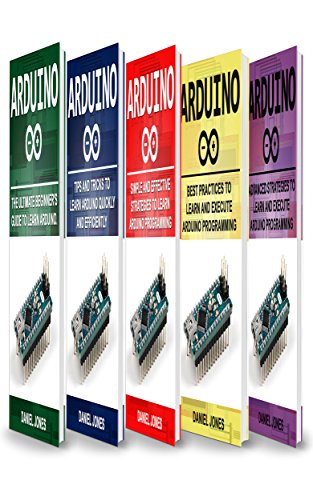Adafruit 16-Channel 12-bit PWM/Servo Shield – I2C Interface: Control Your LEDs and Servos with Ease
Are you tired of manually controlling every single LED or servo in your project? Are you looking for an easy way to control multiple outputs simultaneously? Look no further than the Adafruit 16-Channel 12-bit PWM/Servo Shield – I2C Interface!

With this shield, you can control up to 16 free-running PWM outputs using only two I2C pins on your microcontroller. Plus, with the ability to stack up to 62 shields on a single I2C bus, you can control up to 992 PWM outputs – perfect for those large projects with lots of LEDs or servos.
What is PWM?
Before we dive into the details of the Adafruit PWM/Servo Shield, let’s talk about what PWM actually is. PWM stands for pulse width modulation, and it is a way to control the brightness of an LED or the position of a servo. Essentially, PWM works by rapidly turning the output on and off at a specific frequency, with the amount of time the output is on determining the brightness or position.
The advantage of PWM is that it allows for very precise control over the output, with 12-bit resolution on each output of the Adafruit PWM/Servo Shield. For servos, this means about 4us resolution at a 60Hz update rate.
Built-In Clock for Free-Running Operation
One of the biggest advantages of the Adafruit PWM/Servo Shield over other PWM drivers is its built-in clock. Unlike other drivers that require continuous signals from your microcontroller, the Adafruit shield is completely free running, meaning it runs independently of your microcontroller. This frees up your microcontroller to handle other tasks and allows for much smoother operation of your LEDs and servos.
Adjustable Frequency PWM
With adjustable frequency PWM up to about 1.6 KHz, you can easily fine-tune the operation of your LEDs and servos to suit your needs. This allows for smooth and precise control, whether you’re using the shield to control a simple LED display or a complex robot arm.
Stackable Design for Expandability
The Adafruit PWM/Servo Shield is designed to be stackable, with six address select pins that allow you to stack up to 62 shields on a single I2C bus. This gives you a total of 992 outputs, making it perfect for those large projects with lots of LEDs or servos.
3 Pin Connectors for Easy Servo Connection
The shield features 3 pin connectors in groups of 4, allowing you to easily connect up to 16 servos at once. The servo plugs are slightly wider than 0.1″, so you can only stack 4 next to each other on a 0.1″ header. To stack more servos, you’ll need to pick up stacking headers and right angle 3×4 headers.
5×20 Proto Area for Extra Wiring
The Adafruit PWM/Servo Shield features a 5×20 proto area, giving you plenty of space for any extra wiring you’d like to add. This makes it easy to customize the shield to suit your specific needs and allows for easy expansion of your project.
220 Ohm Series Resistors for LED Protection
The shield features 220 ohm series resistors on all output lines, providing protection for your LEDs and making it trivial to drive them. This ensures that your LEDs will be safe and last for a long time.
Are you looking for a powerful, yet versatile PWM/servo shield for your Arduino projects? Look no further than the Adafruit 16-Channel 12-bit PWM/Servo Shield with I2C interface!
This shield features an I2C-controlled PWM driver with a built-in clock, which means that you do not need to continuously send signals from your microcontroller to keep it running. This frees up your microcontroller to perform other tasks, making it an ideal solution for complex projects that require precise control of multiple servos or LEDs.

One of the standout features of this shield is its ability to stack up to 62 of them on a single I2C bus, providing a total of 992 outputs. This means that you can control a lot of servos or LEDs with ease.
The shield also comes equipped with 6 address select pins, which means you can stack multiple shields and control up to 992 PWM outputs while using only two I2C pins.
With adjustable frequency PWM up to about 1.6 KHz and 12-bit resolution for each output, the Adafruit 16-Channel 12-bit PWM/Servo Shield offers impressive precision and control for servos. For instance, for servos, that means about 4us resolution at 60Hz update rate.
Additionally, the shield features 3 pin connectors in groups of 4, allowing you to plug in 16 servos at once. The servo plugs are slightly wider than 0.1″, which means you can only stack 4 next to each other on 0.1″ header. Nevertheless, the shield comes with a stackable design that lets you pick up stacking headers and right angle 3×4 headers in order to stack it on top of another shield without the servo connections getting in the way.

But that’s not all. The shield also includes a lot of extra space that you can turn into a prototyping area. You get a 5×20 proto area for any extra wiring you’d like to add, which is perfect for customizing your projects and adding your own touch.
This product comes with a fully tested and assembled shield as well as 4 pieces of 3×4 male straight header for servo/LED plugs, a 2-pin terminal block for power, and a stick of 0.1″ header that you can plug into an Arduino. You will need to perform a little light soldering to assemble and customize the board by attaching the desired headers, but it is a 15-minute task that even a beginner can do.
Overall, the Adafruit 16-Channel 12-bit PWM/Servo Shield is a powerful and versatile solution for controlling multiple servos and LEDs in your Arduino projects. Its I2C interface, high resolution, and stackable design make it a must-have for any serious maker or hobbyist. Check it out Now!






